Estimated reading time 11 minutes, 31 seconds.
On July 14, the Chilcotin community of Anahim Lake on the western edge of British Columbia’s Cariboo region was cut off by rapidly moving wildfires.
The Pacific Northwest had experienced the worst heatwave on record a month before, and hundreds of fires — consuming thousands of hectares — erupted across the province. By that mid-July day, the Hotnarko Creek fire to the west of Anahim Lake had grown to 1,500 hectares, while the Big Stick Lake fire to the south covered 4,000 hectares and was expanding as winds gusted up to 50 kilometers (30 miles) per hour. A third fire, smaller but considered out of control, was also raging to the northwest.
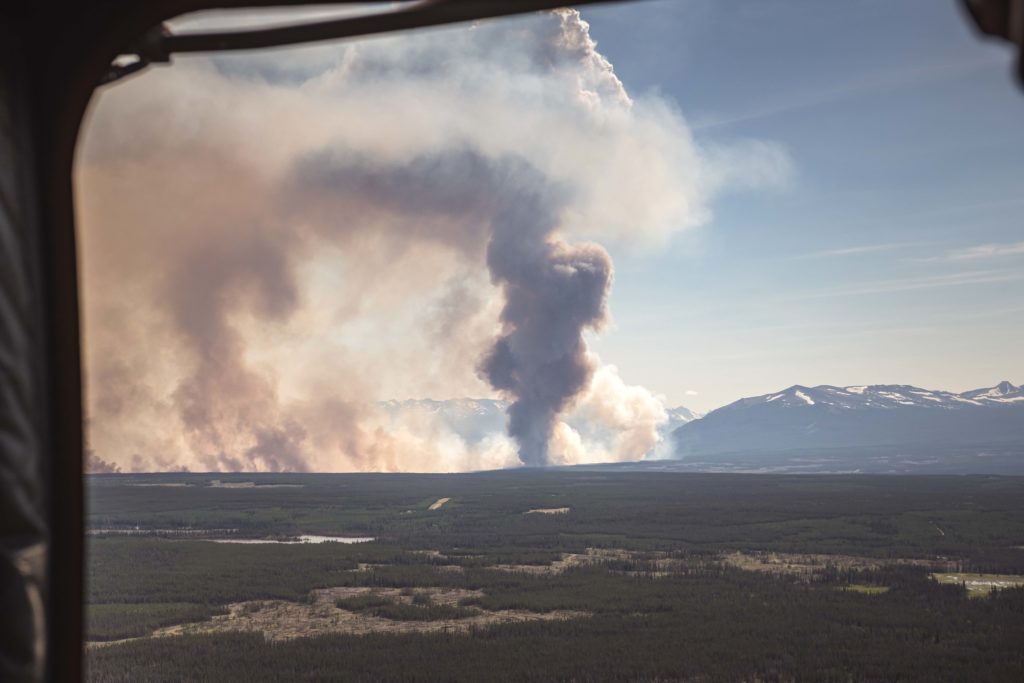
An evacuation order was issued on July 13, but the intensity of the two larger blazes forced the closure of Highway 20 east and west of Anahim Lake, severing all road access for the residents of the 450 properties to the towns of Williams Lake and Bella Coola. Evacuation by helicopter to Puntzi Mountain Airport soon became the last resort.
On the morning of July 15, a Royal Canadian Air Force (RCAF) CH-147F Chinook helicopter set down in Anahim Lake and began airlifting those residents who wanted to leave.
Though urgent, the evacuation was controlled and planned, explained Maj Shannon Brown, commander of Air Task Force (ATF) Kamloops and a member of 408 Tactical Helicopter Squadron in Edmonton, Alberta.

“[The ATF] had good intelligence and forewarning, and [the evac] was able to be executed with a very progressive build up.”
While high profile, the evacuation was just one of numerous missions the aviation detachment has conducted over the past two months in support of the B.C. Wildfire Service (BCWS). Part of a larger Canadian Armed Forces response to domestic emergencies known as Operation Lentus, the ATF was stood up on July 2 in the facilities of the Kamloops Flying Club following a request for military assistance from the provincial government.
Together with an Army task force of approximately 250 personnel from 3rd Canadian Division, led by 1 Combat Engineer Regiment, the ATF has assisted BCWS with the movement of frontline firefighting crews and equipment.
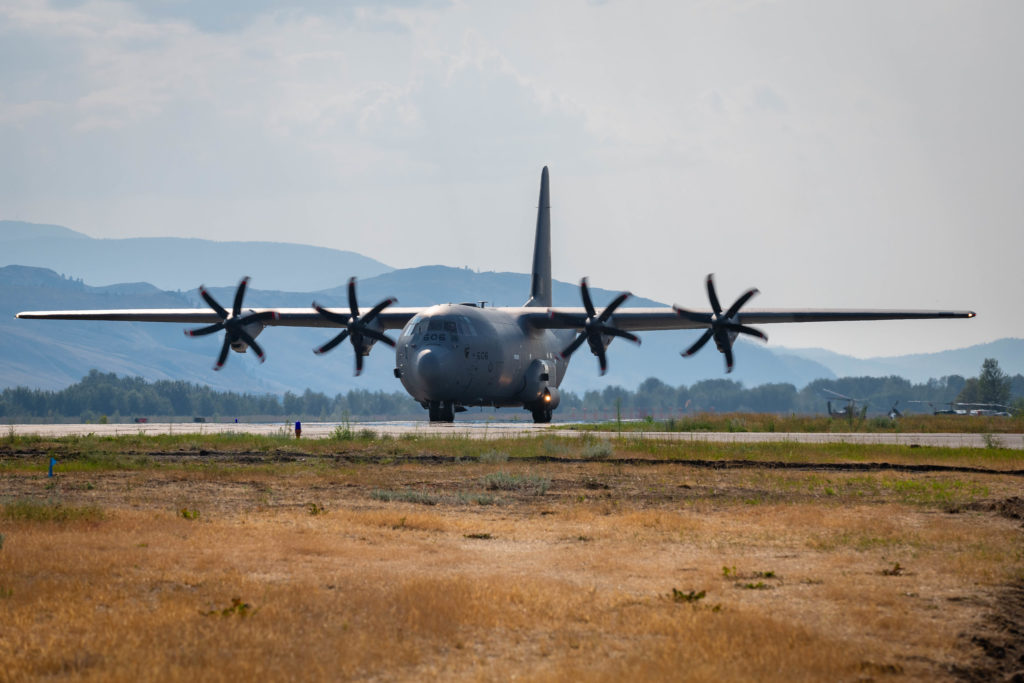
Comprised of 50 to 60 members from across the RCAF, as well as some from the Army and Navy, ATF Kamloops has transported firefighting crews and other BCWS command personnel throughout the area of operations, provided aerial surveillance and reconnaissance of fire lines, and maintained an emergency response capacity to extract civilians and firefighters.
The air assets include two CH-146 Griffons from 408 Squadron and the two Chinooks from 450 Squadron in Petawawa, Ontario — as well as a CC-130J Hercules configured for tactical airlift.
While the ATF headquarters and operations staff are drawn primarily from the tactical aviation squadrons, including at times from 430 Squadron in Valcartier, Quebec, the administration, logistics, and other support trades have come from across the air force.
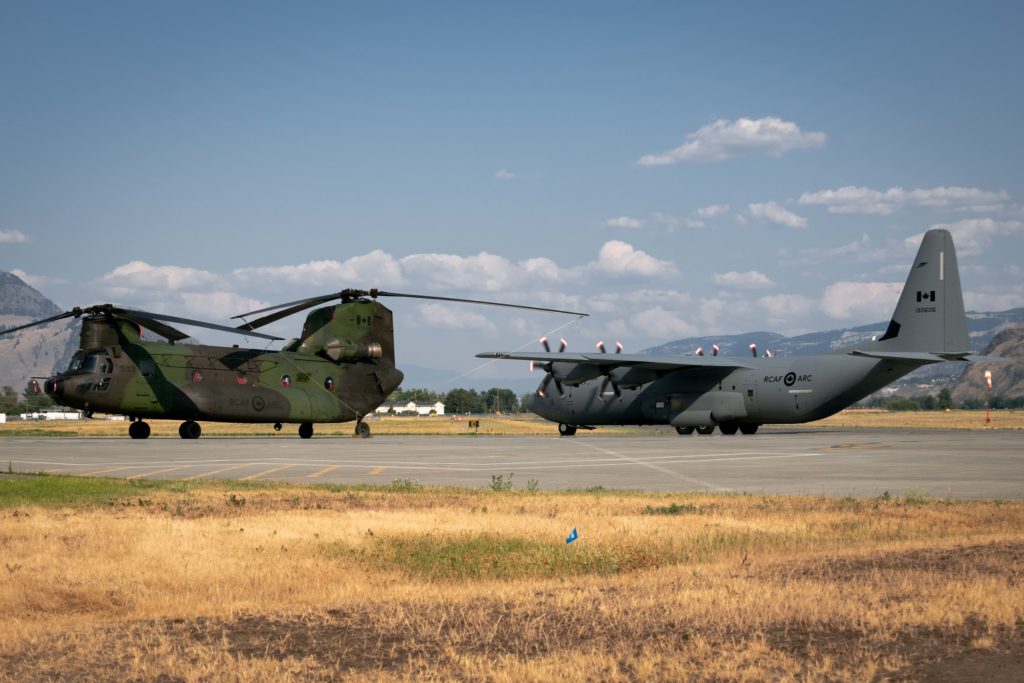
“We have a little bit of something from everywhere,” said Brown, who assumed command of the ATF from Maj Dave Wood of 450 Squadron on Aug. 9.
No Typical Day
The hot and hazy days of early July, when the ATF first set up, have gradually given way to clearer skies and cooler temperatures, but “there hasn’t been a typical day here” for flying conditions, explained Brown in an interview with Skies in late August. Everything short of snow has descended at some point.
“When I first showed up, smoke was covering Kamloops and a lot of the province. We were down to a mile vertical visibility,” she said. “[There were] definitely challenging conditions in the smoke and flat light. With the heat and mountainous area, there are also high-density altitude considerations for the performance of aircraft. We have had to leverage instrument flight rules capabilities, in some cases, to get in and out of Kamloops and other locations.”

In a running battle to try to keep ahead of rapidly igniting fires across the interior of province and on Vancouver Island, CC-130J aircrews have moved crews and vehicles to hardpacked runways, significantly reducing driving time across an area of operations spanning hundreds of kilometers: from Port Alberni and Port McNeill on the island, to Smithers and Fort St. John in the north, and the foot of the Okanagan Valley in the south.
In one instance, the Hercules airlifted a fire crew from Whitehorse, Yukon, to Kamloops, in hours rather than the two days it would have taken to drive. “We had the first unit crew out and in the fight within 24 hours,” said Brown.
While the Chinook has also transported some vehicles, the rotary-wing aircraft have provided the next bound, cross-loading crews, chainsaws, and other personal gear from the Hercules — ferrying them, sometimes 20 at a time, into the thick of the front lines, sometimes landing on little more than prepared log pads.
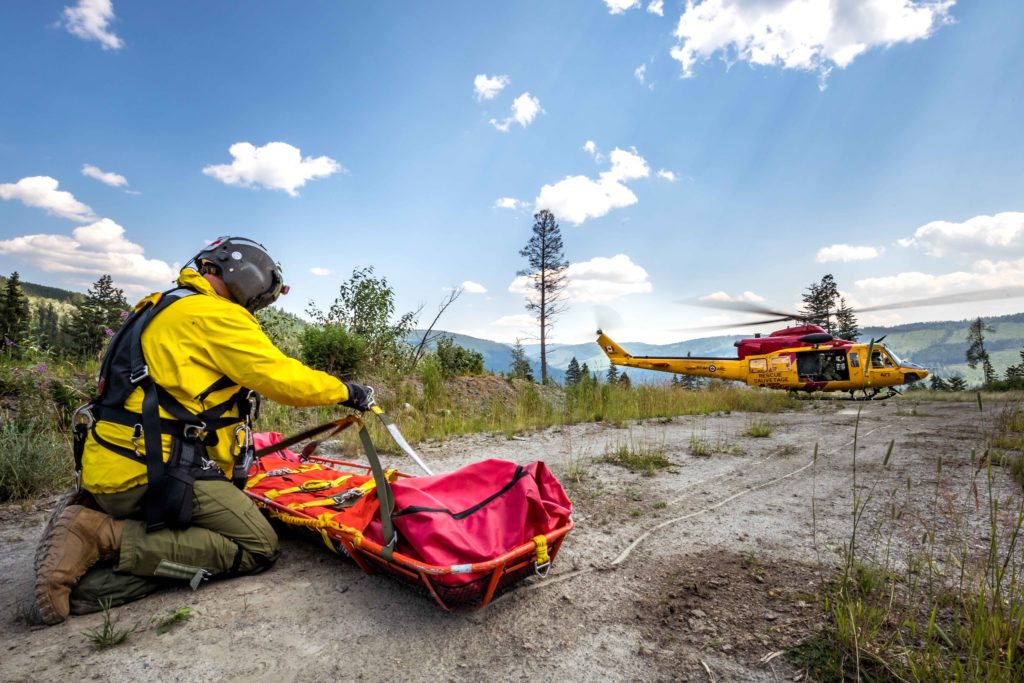
“We are moving a lot of unit crews to and from their [base camps and rest areas] and the front lines,” she said. “While we are prepared for even more austere operations, [the landing conditions] have been very good.”
Though the mountainous terrain in which many of the wildfires are burning can be challenging for aircrews, tactical aviation excels at getting into and out of remote, confined areas under difficult circumstances, she noted. The ATF has been able to combine “our knowledge of battlespace movement” with BCWS’s extensive knowledge of fire behavior and aerial firefighting to safely reach any objective.
“They are the experts,” said Brown. “They are used to working with aviation, so they are familiar with how [changing conditions and terrain] could impact us.”
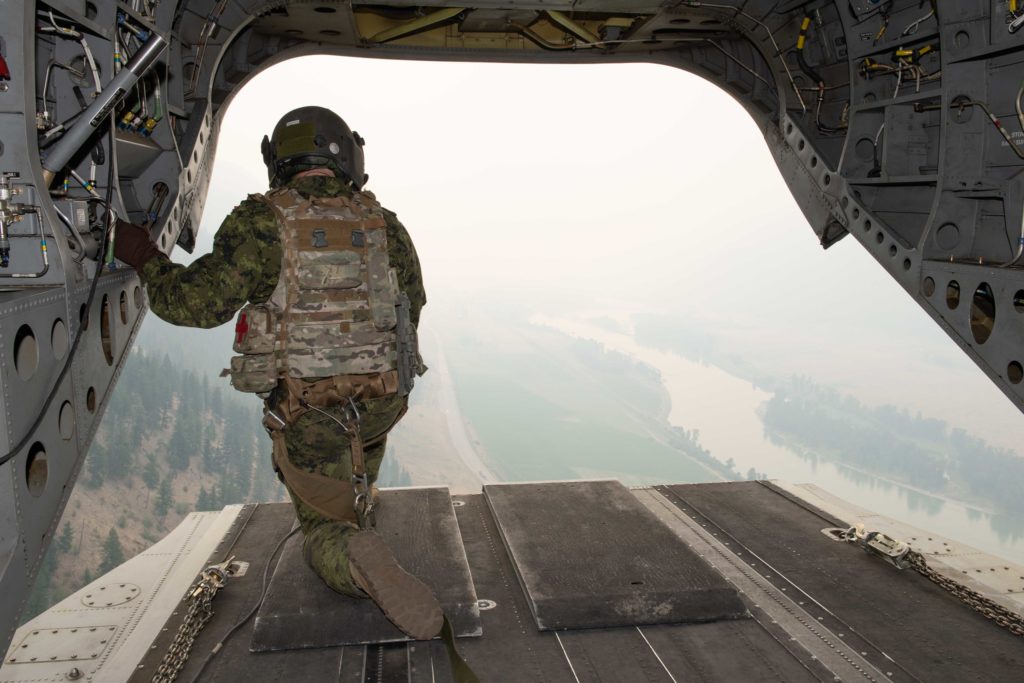
As of late August, the number of active wildfires had decreased to fewer than 250, and temperatures were dropping, accompanied by more frequent rainfall.
“It has given BCWS a reprieve,” said Brown, though she cautioned the number remains significant and fire behavior could change with a gust of wind. “We have had a lot of alerts and evacuation orders rescinded or downgraded within the province. Hopefully that continues, but we remain postured to respond if it changes.”









In the USA, etc. military helicopters often use Bambi Buckets to drop water and/or retardant on small fires. US Air National Guard C-130s are sometimes fitted with slide-in water-bombing equipment for fighting large fires.